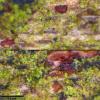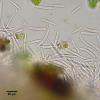
31-07-2011 22:14
 Alex Akulov
Alex Akulov
Dear FriendsLet me to propose you a full set of de

28-04-2012 20:13
 Alessio Pierotti
Alessio Pierotti
Questa volta cerco: Carmarán, C.C., M.B. Pildain

24-04-2012 14:21
Thomas LæssøeI am hoping somebody can help with this reference
Coelo on Malus
Martin Bemmann,
29-04-2012 22:27
 Dear friends,
Dear friends,some weeks ago I found some Coelomycetes on a dead branch of Malus still attached to the tree. Conidiomata very tiny and dark orange, erumpent through the bark. Conidia are cylindrical of various length and multiseptate.
I add some pictures. Maybe one of you stumbled on this one by chance and has a guess...
Best regards,
Martin
Hans-Otto Baral,
30-04-2012 19:25

Re : Coelo on Malus
Hi Martin
I suppose this is an anamorph of the genus Plasia?, connected to Durella s.l. (Xylogramma). I have not enough own observations to give a more clear identification.
Did you measure the conidia?
Zotto
I suppose this is an anamorph of the genus Plasia?, connected to Durella s.l. (Xylogramma). I have not enough own observations to give a more clear identification.
Did you measure the conidia?
Zotto
Martin Bemmann,
30-04-2012 22:53

Re : Coelo on Malus
Hi Zotto,
measuring these conidia will give no satisfying result, the range is too wide: 24-40 x 3.5-5.7 µm. The long ones are slim while the shorter ones are more sturdy. There is also a tendency to fragmentation at the septa.
I will follow your hint with Plasia/Durella atrocyanea?...
Regards
Martin
measuring these conidia will give no satisfying result, the range is too wide: 24-40 x 3.5-5.7 µm. The long ones are slim while the shorter ones are more sturdy. There is also a tendency to fragmentation at the septa.
I will follow your hint with Plasia/Durella atrocyanea?...
Regards
Martin
Martin Bemmann,
30-04-2012 23:29

Re : Coelo on Malus
Does someone have Sherwood's paper of 1981: Convergent evolution in discomycetes from bark and wood???
best regards,
Martin
best regards,
Martin
?
Hans-Otto Baral,
01-05-2012 08:53

Re : Coelo on Malus
Martin
I just looked at the paper of Sherwood on Plasia, and I see that the conidia of P. ramicola (anamorph of Durella atrocyanea) fit quite perfectly yours. But I never saw P. ramicola myself so far, although I have plenty of D. atrocyanea collections.
I attach the paper on Plasia.
Convergent evolution I attach next.
Zotto
I just looked at the paper of Sherwood on Plasia, and I see that the conidia of P. ramicola (anamorph of Durella atrocyanea) fit quite perfectly yours. But I never saw P. ramicola myself so far, although I have plenty of D. atrocyanea collections.
I attach the paper on Plasia.
Convergent evolution I attach next.
Zotto
Hans-Otto Baral,
01-05-2012 08:54





 Sherwood-1981-Plasia-0001.pdf
Sherwood-1981-Plasia-0001.pdf